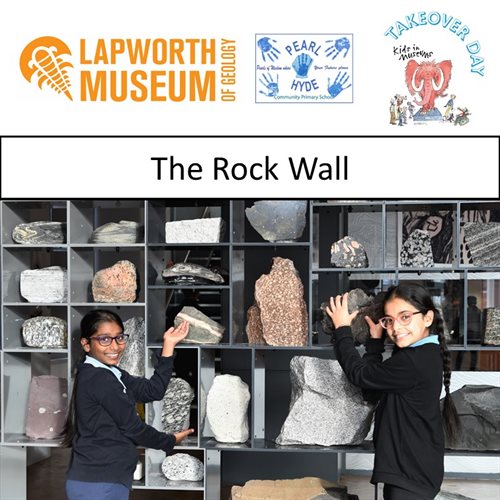Click here for Youtube Video
 Video Transcript:
Video Transcript:
The rock wall contains more than 125 rock specimens divided into three main groups. The first thing we noticed is that rocks are different shapes and different sizes. There are three groups called Sedimentary, Metamorphic, and Igneous. Our favourite thing about the rocks is that they are bumpy and colourful. On the rock wall, the video shows how rocks are made.